Overview
Herbs are plants which enhance our lives, as they serve and delight us. Since the earliest of times people have sought to vary and liven the flavour of their monotonous staple foods. No herb I know of does this as well as the humble Levin plant.
The Magikus Botanica by Raguth Maladrin
Found high up in the Bertheirdeen mountain range situated at the east edge of the , the Levin Plant is one of the most sought after herbs in the . Used for everything from magical experimentation to food to medicine its value has skyrocketed in recent years.
First discovered in the year 86 by the Royal Raguth Maladrin, Levin was one of the first magical plant mutations recorded in the Queendom. Found glowing in the storm during a routine check of the continuing strength of the Storm Wall the plant was carefully gathered and studied for many years before it started to be used for things like cooking.
At first it was only available for select royal events but as more viable collection and shipping endeavours popped up it began to be available for the general citizenry, albeit at a very high price. Now due to the remote cultivation and gathering efforts that have been established over hundreds of years the plant is common enough in the city that it is accessible to most people and used frequently in national dishes.
Anatomy
I have never seen anything where the influence of excess magical energy is more apparent than the Levin Plant. Through forced magical evolution it has become truly a wonder of the natural world.
The Magikus Botanica by Raguth Maladrin
The stems of the plant are thick and strong to stand up against the high storm winds. It is covered in hard ridges that grant flexibility while also maintaining tensile strength. It has a somewhat otherworldly glow to it coming from the sap running inside the stem. In strong storms the glow shines brighter making it easier to find.
On top is a large, hollow, waxy flower bud that has small holes at the base. Each hole is surrounded by small stamen covered in a waterproof sticky pollen. Inside the flower bud is large pistil covered with receptors for the pollen and with wet patches of oozing nectar to feed the insects that pollinate it.
After pollination the plant sprouts a series of strong wing like growths on top for the wind to grab hold of and carry it off.
Each plant has two to three offshoots from the main stem that have an even number of long toothed leaves. These leaves conduct ambient electricity over them and not through them, which causes electrical surges to jump from leaf to leaf saving the plant from suffering damage. Touching the leaves without protection or precautions is a dangerous activity and can cause serious injury and even death.
Inside the flower bud it has a dark coloured seed pod with yellow markings, inside which are some ridged hard seeds.
Flower Characteristics
The flower pods are shaped like little lanterns, ovoid shaped with flattened dents all over it. The colours range from a light orange all the way to a deep red, usually a gradient of the two. There are small holes near the bottom. Each hole has a ridged hood over formed by the retracting flower matter and is granting some protection from the winds. Surrounding the holes are the pollen covered incarnadine stamen which are shaped like thin hairs. These are next to impossible for the insects to avoid.
Unlike many flowers it doesn't give off a noticeable scent. Botanomancers have surmised this is because the constant water and wind would render any sort of smell useless. Instead they think it gives off a magical aura that attracts the pollinators.
Reproduction
The plants are pollinated by the s with which the plant has a symbiotic relationship. Seeds are carried by the umbrella like flower buds (they change after pollination) on the high winds. Intense electrical activity cause them to crack and fall.
The Thunder-Thrips pollinate and hide inside the flowers from storms. They move from plant to plant using their hooked feet and sip sap from inside the flower buds which gives the insects magical resistance to the electricity that goes through the leaves and the storm itself.
Symbiotic Organisms
Thunder-Thrips live in harmony within the environment of the storm zone due to the wonder of the Levin plant. Without it to shelter in during the heavy, near constant, rainfall the insects would have a very hard time surviving. The shelter also provides food for the small bug, another thing that is sparse in the hostile environment. The food itself gives the bugs a level of innate magical protection from the lightning in the region as well as the electrical surges that pass over the plants leaves.
As payment for this threefold gift from the plant the insect does the tough and needed job of pollinating the Levin. Due to its electrical properties it is hostile to the few other lifeforms in the area.
Growth Rates & Stages
- Sprout: After being carried by a storm and supercharged with storm magic the seeds land in a suitable place. The seed then starts to grow in its new habitat.
- Seedling: Roots start to develop and spread, pushing through the rocky earth. Early leaves sprout from the stalk and begin to absorb residual magic from the air.
- Vegetative: More stalks grow from the main stem which is starting to grow bigger and has its first faint glow. More leaves appear absorbing more and more magical energies.
- Budding: The buds on top begin to appear, small at first but growing fast. The stalk gets thicker still and is glowing strongly now.
- Flowering: The buds open their pollination holes and are ready to be used as shelter and for pollination to occur. The leaves of the plant now have residual overflow magical energy running through them manifesting as electrical current jumping from leaf to leaf.
- Podding: The pistil inside the plant shrinks down once pollinated and hardens. Over the next few days it will metamorphose into the seed pod ready to take to the winds. The exterior of the flower bud starts to grow the little wings at the top to aid the wind in carrying it.
- Ripening: The stem under the flower bud weakens to aid in detaching from the main stem. The flower is now waiting for a strong enough wind storm to take it off the main plant body
- Flight of the Seed Pod: A strong wind grabs hold of the upper wings on the flower bud and pulls it free from the body of the plant carrying it through the storm until enough magical lightning is present to cause it to burst and scatter its seeds.
Ecology & Habitat
Exclusively found high in the Berthierdeen Mountains on the Vreabian side of the Storm Wall. Entirely localised in the mountainous region known as the Lightning Bluffs. The area has been divided into sectors, each sector has a gatherer living there who is responsible for the cultivation and protection of the Levin plants. The plant is mostly found in rockier regions of the mountains, areas where there aren't any wind breaks or other plants besides grasses.
There is some debate if the Levin plant itself only grows in areas with no plants or its magical and hostile nature actively prevents other plants from growing nearby.
The energy gained from the abundant storm magic gives the plant a natural immunity from the majority of the adverse effects in the Storm Wall region. The water that falls mostly soaks down into the extensive cave formations inside the mountains. The roots of the plant are hardy and strong, holding them tightly to the rocky ground.
Dietary Needs
Being a magiotroph the plant absorbs latent magical energy directly from the air and ground. This gives it a natural hardiness and resistance. This plant requires a large amount of ambient storm magic and a region of high elevation.
Biological Cycle
After the flower buds have taken flight the plant enters a short form of hibernation where its leaves fall off the main stem and it starts its process of growth over. A new bud is formed on top, more leaves will sprout and the bud will eventually be carried by the wind. Harvest of the bud early can cause the plant to enter the hibernation period before its ready to sustain itself which causes the plant a premature death.
After one or two years of repeating this process the plant will stop this cycle and go into a deeper hibernation that is essentially plant death. Botanomancers that have studied the plant think that it is something to do with the fact that each time it goes through the process it needs more and more magical energy to sustain itself getting to a point where there isn't enough in the surrounding area to survive on. They theorise that if a big enough infusion of magical energy could be put into the area the stalks of old Levin could sprout again. However this process would be a waste of energy as fresh plants can give the same products for less magic.
The canniest gatherers of the plant know to pull these 'dead' stalks to allow younger plants less competition for the ambient magical energies. Thus promoting better growth and more bountiful harvests.
Domestication
I find myself at my wits end, this stupid plant has rebuffed all my attempts to cultivate it. I don't understand why it so tenaciously refuses to grow. How difficult can it really be, it's just a plant. I must go now, my neighbours have gotten together to force me to stop my experiments. Apparently they don't appreciate the indoor lightning storm I have created in my rooms. I cannot imagine why.
The personal diary of Raguth Maladrin, recovered from his corpse after his untimely demise at the hands of a lynch mob
It has thus far resisted all attempts at domestication. It seems to rely too much upon the magical area it developed in. Many attempts have been made to recreate these conditions and many have ended in disaster, either for the magical practitioner involved or for the locality it was attempted in. All research into cultivation of the plant has been banned from populated regions.
Uses, Byproducts & Exploitation
The seeds of the plant can be harvested and on impact create a crack like a strike of lightning. This is very rarely done however due to fact that the seeds are a highly sought after ingredient for cooking. They are ground up to a fine spice and added to food to create a very popular tingling effect to the dish. It feels like a faint electric shock across the tongue and is a staple of Vreabian cooking.
The leaves of the plant are also gathered and mashed to a pulp to make a substance that has lightning/electricity resistance which is highly regarded by magic users.
The sap of the plant is prized for its local anaesthetic effect through electro-anaesthesia. Diluted it can be used for medical purposes but if eaten neat can cause anaesthetic toxicity and be fatal.
The flowers are generally considered a waste product with no use but to the people who live in the mountains and harvest the rest of the plant the flowers are used to make a very potent alcoholic drink that actually glows faintly and has a strong, bitter taste. The locals call this Shine-Wine due to the glow that comes off it. Its faintly electrical nature means it has to be housed within a wooden flask instead of a metal one. Glass is too expensive for the poorer demographic that harvests the plant to afford.


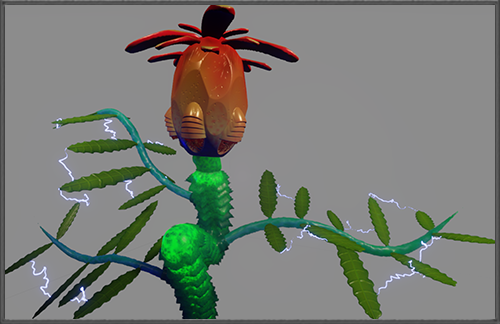
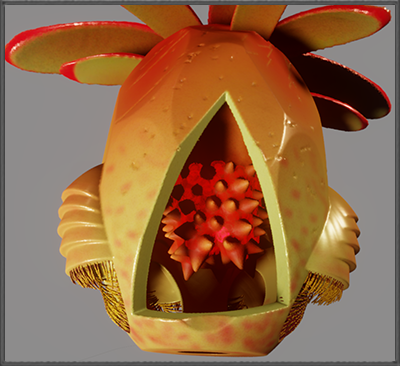
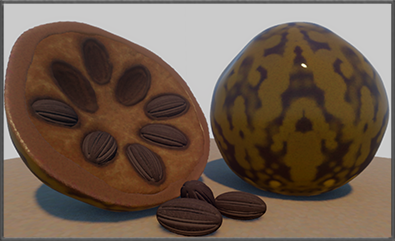
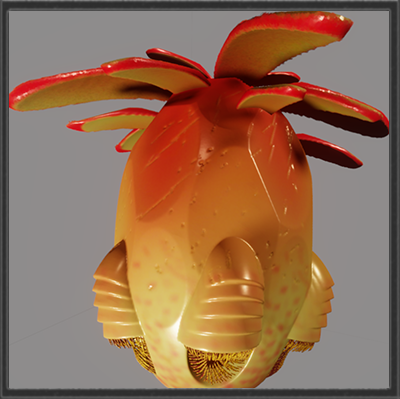
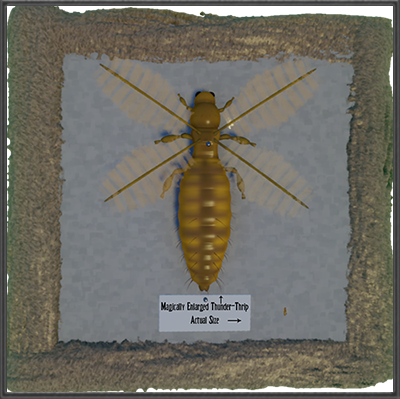
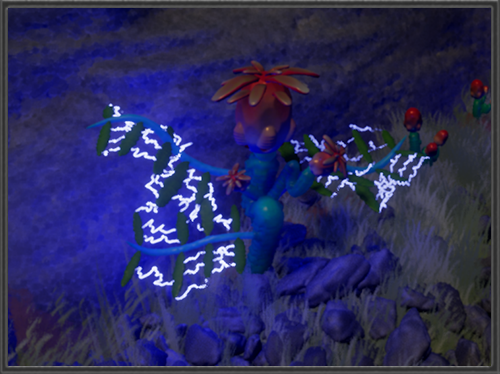




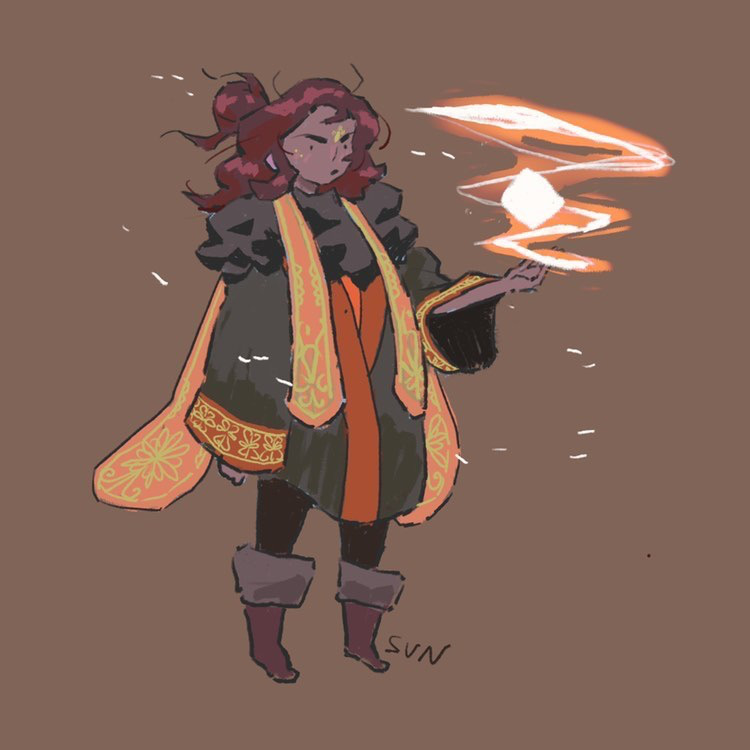







Great job! The art is awesome! Wow. It really helps to have all those visuals as you work your way through the article. I quite liked the symbiotic relationship with the thrips, too.
Thank you for the lovely comment. I'm glad you liked the artwork.